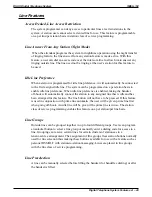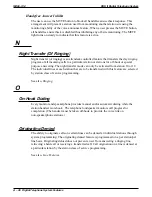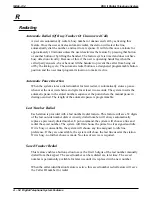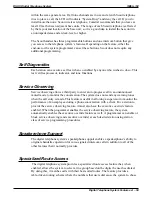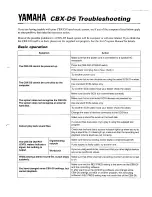
LCD Messaging
Standard and system-supplied custom display messages can be set by dialing a specific
code at any station. Such messages are to be received and displayed by any LCD
speakerphone that calls the station which set the message. When a message is set, the
intercom light at the setting station will flash to indicate that the feature is active.
Message Waiting
Special feature access codes enable a station user to control the message waiting (MW)
light at other stations in the system. When the message waiting light is turned on at a
station, a call can be automatically placed to the station that turned it on.
Alternately, one station can be designated by COS programming as the central message
desk and can be arranged for exclusive message waiting control. The central message
desk can be used to control message waiting lights and deliver messages to and from all
other stations in the system. The ability of a station to originate a message waiting signal
is enabled by programming action. Station class of service programming provides a
station with the ability to originate a message waiting signal and is used to create a
central message desk. The system defaults the messsage wait originate feature as enabled.
Response Messaging
This feature allows a user to reply in a non-verbal manner to a voice announce or
tone-signaled intercom call or to a subdued off-hook voice announce call if the intercom
caller is using an LCD speakerphone. A station user can press a programmable button in
response to an intercom call and send a message to be shown on the display of the calling
station. Response messages are pre-programmed by the attendant and later stored by
station users at programmable buttons on their individual stations as need dictates.
Station-To-Station Messaging
If a station has a DSS/BLF appearance at another station, a callback message indication
can be left at that station with the DSS/BLF appearance. The user can dial a special code
to turn on the BLF light at the called station that is assigned to the calling station. This
light indicates that a callback is requested. The light is automatically turned off if a
successful callback is made.
If a station number is not programmed for a DSS/BLF appearance at another station,
attempting to place a call back message will cause the central message desk station to
ring. If there is no central message desk assigned, no action will occur.
IMI66–132
DSU II Digital Telephone System
A – 46 Digital Telephone System Features
Summary of Contents for DSU II
Page 31: ......












